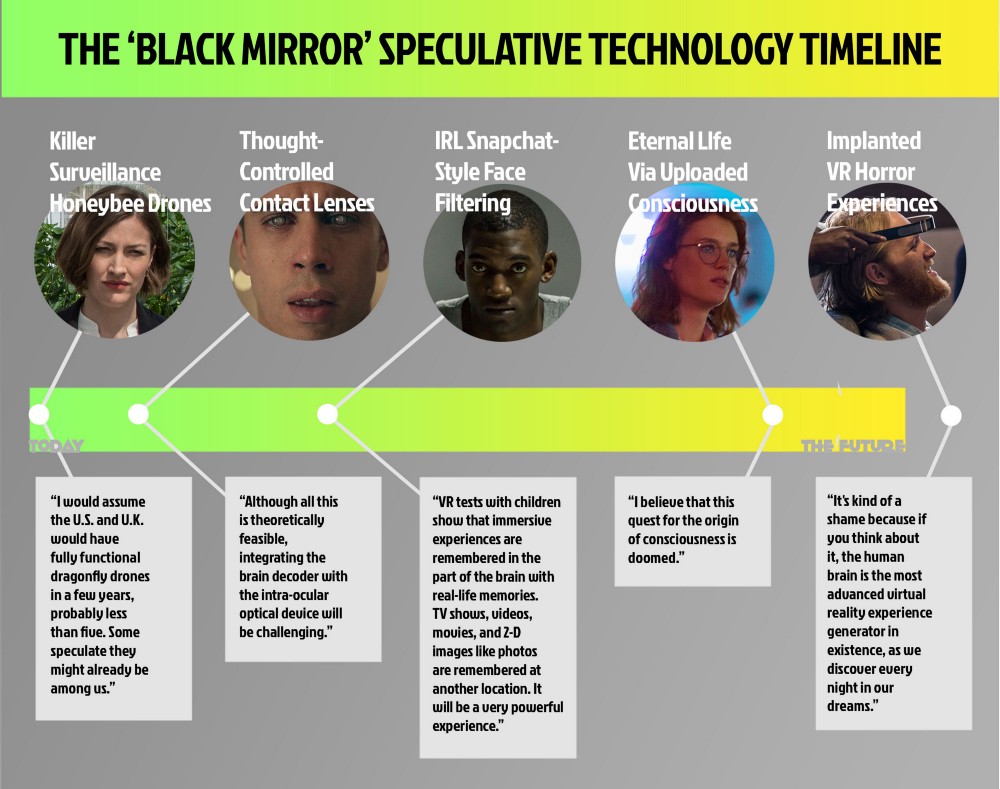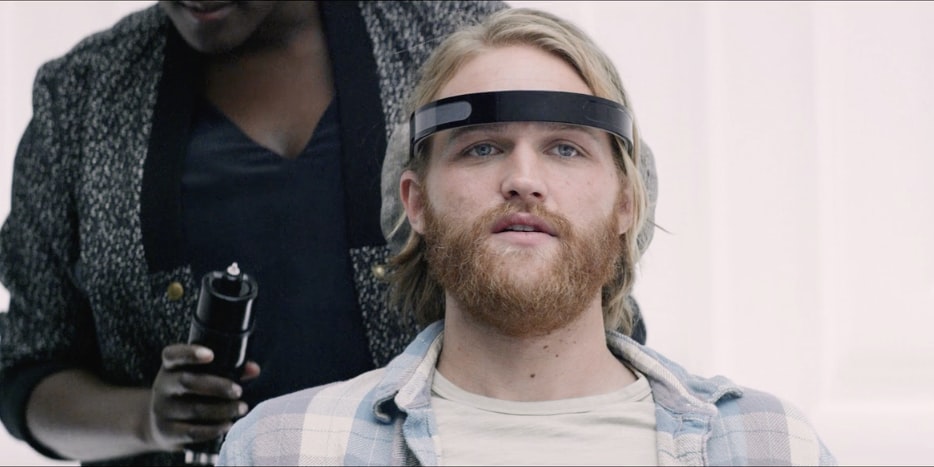SHARE
Black Mirror Technology is Completely not Feasible. Or is it?
Black Mirror technology is simultaneously attainable and impossible-seeming. Or is it? Each episode explores the potential pitfalls of technology, both futuristic and around the corner. But what makes the show border on creepy instead of simply fascinating is this question: How possible is it that this thing will happen? How far into the future is — or isn’t — it?
 In
In
“Hated in the Nation,” the sixth episode of Black Mirror Season 3, we are confronted with a very real problem: the near extinction of bees. Drone bees have been created to supplement the dying population. They can be hacked, too, and then used to target and kill citizens. Also, it all seems entirely probable!
“This is actually a really funny concept that could potentially happen,” said Kyle Foley, president of the drone technology company Skyworks Project, via email to The Ringer. “The way I would imagine it working is using object detection [which is already happening] to differentiate between flowers and people. All you need onboard is a very tiny computer and camera to tell the two apart. The technology is there, it’s just a matter of miniaturizing it … With a drone that small, it would be very difficult to carry a large amount of this substance, so it would likely be a one-shot, one-kill type of deal.”
Foley says that in the next two to three years, drones are going to get smaller and smaller — they may get as small as, say, a honeybee. “Currently they are pretty small, but not bumblebee small.” He says right now there are drones the size of goldfinches that “could definitely do what you are talking about.” He gives it two to three years until this could be a real thing. “Kinda scary to think about …”
In “Men Against Fire,” we find soldiers hunting down and killing “Roaches,” a race of humanoids we’re told have a blood disease that causes them to be grossly disfigured. The soldiers are assisted in their quest by military-supplied neural implants that equip them with all manner of augmented reality capabilities: maps of battlefields, visual links to nearby drones, additional data about combatants, etc. Could the military use AR technology to give its soldiers the impression that enemy combatants are zombie-like monsters?
If you’ve ever vomited up an AR rainbow, you know that live-filter tech in its current state is very good. Snapchat still owns the game, but other contenders have shown themselves just as capable of creating realistic digital filters and masks that are highly responsive to the size, movements, and angles of whatever face they’re fixed on. Take a gander at the Halloween masks designed by Prisma and rolled out for use across Facebook Live.
The insidious part of “Men Against Fire” is that the Roach-ifying is automatically applied to a specific ethnic group that we learn has been systematically registered by the government. The technology to allow this is, more or less, here as well — in the same way that facial recognition software suggests that you tag a known friend, it might suggest a default filter for a recognized face.
In “Playtest,” a broke traveler takes a gig testing a new, top-secret virtual reality horror game. He gets a spinal implant to connect his brain to the gaming interface, for gameplay customized to his worst nightmares. When do today’s actual scary, brain-warping VR horror-makers think we can expect that type of technology in consumer gaming products? The good news: Not anytime soon, and probably not ever.
“The ‘Playtest’ Black Mirror episode was great and theoretically possible, but we are light-years away from something like that,” Shawn Hitchcock, who created the horror VR game “Emily Wants to Play." Hitchcock elaborated on why “Playtest” is too far-out to happen. “In the episode they directly interface with the user’s brain. The device is physically attached to their nervous system through the back of their neck. This itself would be very dangerous and could cause all sorts of problems, from numbness in limbs to complete paralysis.”
 via The Ringer
via The RingerHopefully, you have discovered some new technologies that are currently being developed and, as the premise for Black Mirror goes: technology is not bad in itself, but people's choices as to how to use it.
